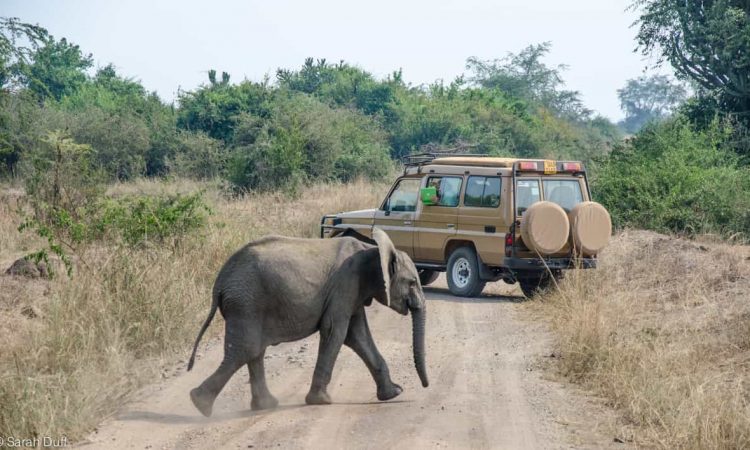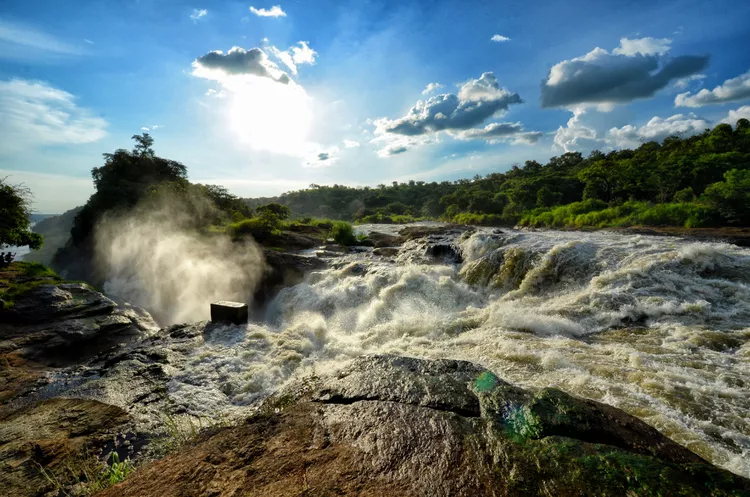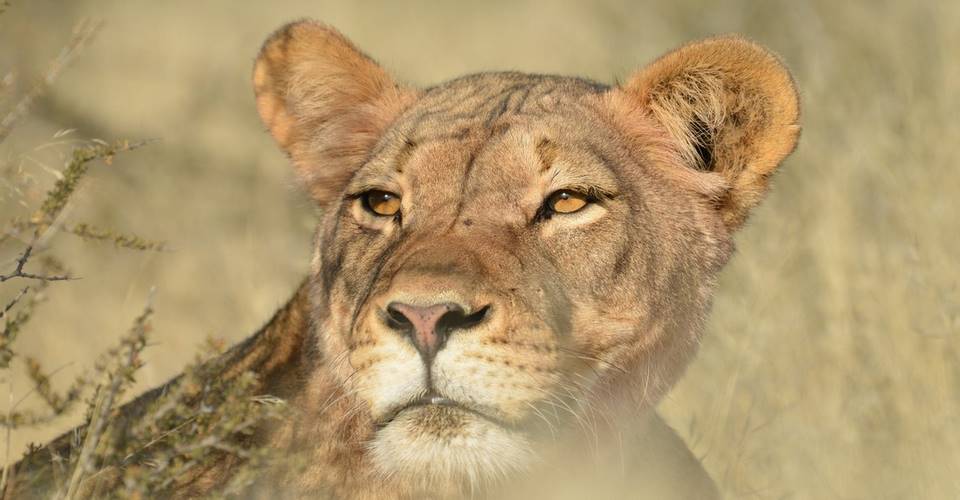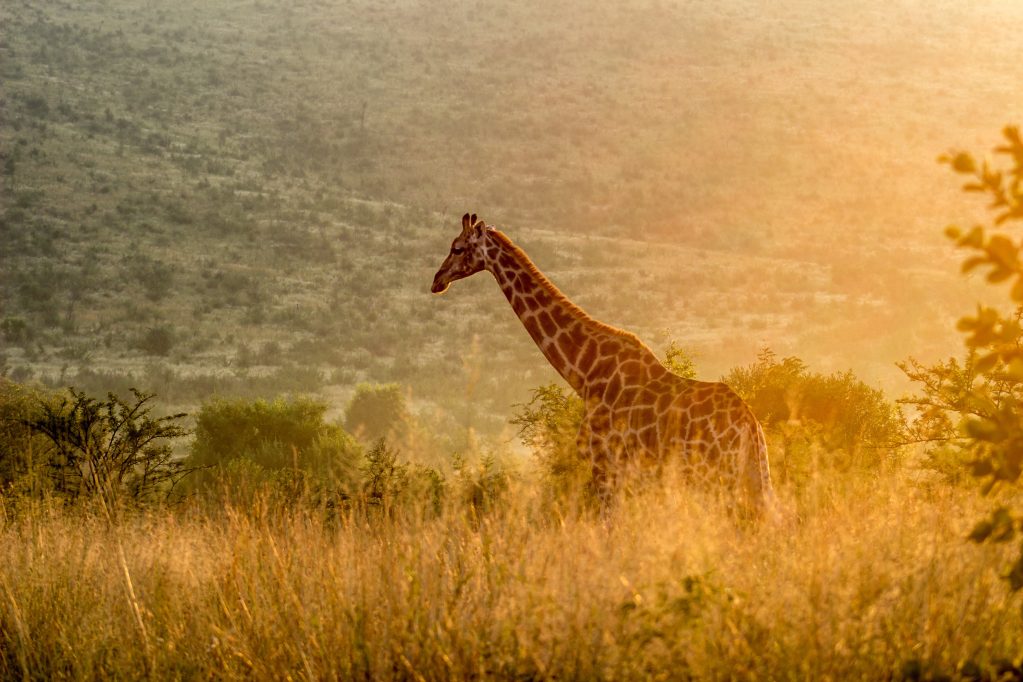10 Reasons to Visit Murchison Falls National Park
The impressive Murchison Falls National Park is the largest and most exciting game park located in the northwest of Uganda, it lies within the East African Rift, and shares a border with Lake Albert.

Murchison Falls National Park offers incredible wildlife, boat safaris and game drives. As you plan a Murchison Falls Safari in this blog we take you through the 10 Reasons to visit Murchison Falls National Park.
-
Spectacular Murchison Falls
The most powerful waterfall in the world, Murchison Falls is a remarkable attraction and one of the 10 reasons to visit Murchison Falls National Park, the falls is formed as the Victoria Nile is forced through a narrow, seven – metre gap on the edge of an escarpment. This forces the water to charge over the edge and create a fierce, white-water waterfall dropping at only 43m (141ft). The force and power of the falls, as well as its dense jungle setting make it a jaw-dropping sight to behold.

In 1954, Ernest Hemingway famously crashed his plane just down river from Murchison Falls.
Murchison Falls is the largest waterfall anywhere along the Nile and its various branches, it consists of two waterfalls that is the main drop, and a smaller, more vertical one just to the north called Uhuru Falls.
-
Varied and Beautiful Scenery
Murchison Falls National Park is bisected by the Victoria Nile creating a northern sector and southern sector. The Northern Sector is known for its tall grasslands (interspersed with Borassus palms), acacia trees and riverine woodland. And the Southern Sector has wooded savannah and dense tropical forest. In the west, where the Victoria Nile empties into Lake Albert, there is an extensive wetland.
Throughout the park, the views are beautiful and at very surprising at times. It is a great destination for landscape photographers to feast their lens. The twin waterfalls constituting Murchison Falls and Uhuru Falls are the gorgeous scene most commonly associated with Murchison Falls National Park. Also, the riverbanks and the Victoria Nile delta, both of which teem with waterbirds, waders and other wildlife.
There are 775 plant species in Murchison Falls National Park including 145 tree species including acacia, sycamore fig, Borassus palm, Mahogany, sausage and dombeya (wilder pear). Also Strangler figs also grow in the forested parts of the park, these are tree species that grow up and around other, established trees, sometimes causing the support trees to eventually die.
-
Excellent Game Viewing
As per the 2015 survey, there are at least 109 species of animals in Murchison Falls National Park. Many of them are large mammals that are safari favorites like lions, leopards, antelopes and elephants. The existence of the Victoria Nile in the park is a major reason for the abundant wildlife- wallowers and other thirsty animals flock to the river and its wetlands.
When you head to the waters, you can expect to see hippos, elephants, crocodiles and more exciting wildlife.

The most commonly or easily sighted animals in Murchison Falls National Park are giraffes, hippos, cape buffaloes, crocodiles and various antelopes including Uganda kobs.
Wildlife in Murchison Falls National Park include
- Bush elephants
- Lions
- Leopards
- Cape buffaloes
- Rothschild’s giraffes
- Spotted hyenas
- Patas monkeys
- Vervet monkeys
- Anubis baboons
- Jackson’s hartebeests
- Uganda kobs
- Defassa waterbucks
- Grey duikers
- Bushbuks
- Bohor reedbucks
-
Patas Monkeys can be seen in hundreds
The Patas Monkey is an Old World Monkey found in the savannah of West, Central and Eastern Africa. This monkey has another names including Wadi monkey and hussar monkey.
The monkey has orange fur on its head, back and flank makes it very distinct, its belly and legs are mostly whitish. The male patas monkeys are much large than the female of the species with adult males weighing around 12 kg (27 lb) while adult females only average around 6.5 kg (14 Ib).
Unlike most monkeys, the patas monkeys live on the ground and Murchison Falls National Park is one of the best places to see them, as they are seen in abundant numbers enjoying the open savannah region of the park. The patas are social animals living in large troops of around 60 individuals, they are easily seen in Murchison Falls National Park.
Patas monkeys are the fastest primates in the world capable of running up to 55km per hour, they use their speed to aid in their survival. If a predator like a cheetah is spotted, he alpha male makes himself conspicuous and then charges off at great speed, thereby drawing the predator away from of the trip.
-
Sightings of the rare tree climbing lions
This might come as a surprise, but some lions climb trees but they are rare. The tree climbing lions can be seen in some parts of Uganda and northern Tanzania making for an exciting sight to see a lion climbing a tree in the same way as a leopard, lounging in a tree or standing and surveying the surrounding area from this helpful vantage point.
Murchison Falls National Park is one of the few places where lions like to climb and hang out in trees. They enjoy splayed trees such as sycamore figs and acacias as these trees have long, plain branches that are comfortable to lay down on.
Lions can be found throughout Murchison Falls National Park. The best sightings, however are often found along the Queen’s and Victoria Nile Tracks.
-
Rare Rothschild’s giraffes thriving in the park
The rare and endangered Rothschild’s giraffe is another remarkable drawcard of Murchison Falls National Park. These giraffes are a subspecies of the northern giraffe with about 1,500 individuals and can only be seen in Uganda and small parts of southern Kenya.
One of the distinguishing features of the Rothschild giraffes is its ossicones which ae the skin-covered bony protuberances on its head. They have five ossicones, which is more than any other giraffe. The two parietal ossicones on top of the head are the tallest, and all giraffe species have these. But Rothschild’s giraffe also have a smaller one behind each ear and one in the middle of the forehead.

However it is by far the easiest way to distinguish the Rothschild’s giraffe from other giraffe species and subspecies is by looking at its lower legs. There are no marking here, the patches that cover the rest of body fade away around the knee. The solid creamy color of the lower legs almost make it look like the giraffe is wearing knee-high socks.
Murchison Falls National Park is one of the best places to see Rothschild’s giraffes, the park is actually home to over half of all the giraffes of its kind in the world.
-
Great Numbers of Uganda Kobs
The Ugandan kob is a highlight of Uganda safaris and one of the reason is its limited range, it can only be found in Uganda and small parts of South Sudan and the DRC. Also it is the most famous of Uganda’s antelopes and it even appears on the country’s coat of arms.
Often Uganda kobs are mistaken for impalas, and indeed the two species look similar. But interestingly, imapalas and kobs are not part of the same genus. The Ugandan kob is a Kobus, while the impala is the sole member of the genus aepyceros.
The Ugandan kob lives in open and wooded savannah, as well as grassland. Murchison Falls National Park has a large population of Uganda Kobs, so you should be able to see some of these graceful creatures on a safari there. It is easy to differentiate these as only males have horns.
-
Abundant Birdlife including the Pre-historic Shoebill
Murchison Falls National Park is one of the best birding destinations in Uganda and one of the best places in Africa to see the pre-historic shoebill. Also known as whaleheads, whale-headed storks and shoe-billed storks, the shoebills are large, distinctive and not particularly attractive birds. Their iconically large beak seems oversized to say the least, but they are fascinating birds are partly for that reason.
Shoebills like to hang around in swamps, which is where they catch their prey. They are incredible hunters going after animals that are only a little smaller than them, like monitor eels, lizards and even baby crocodiles.
In Murchison Falls National Park the best place to see shoebills is a long the Victoria Nile between Nile Safari Lodge and the river delta at Lake Albert.
Murchison Falls National Park is home to around 450 bird species including
- Abyssinian ground hornbills
- Blue-headed coucals
- Red-winged grey warblers
- White-crested turacos
- Red-headed lovebirds
- Shoebills
- Black-billed barbets
- Red-throated bee-eaters
- Grey-headed, woodland and giant kingfishers
- Grey crowned cranes
- Speckle-fronted weavers
- Black-headed lapwings
- Palm-nut vultures
- Senegal thick-knees
- Squacco and goliath herons
- Denham’s bustards
- Black-headed and papyrus gonoleks
- Silverbirds
The best time of the year to see birds in Murchison Falls National Park is January to March.
- Thrilling Boat Safari
Boat safaris on the Victoria Nile are the best way to experience the marine side of Murchison Falls National Park, this allows you to see and appreciate different animals and views of the park.
The boat cruise starts 15km downstream from Murchison Falls at Paraa, which means “the place of hippos” in Luo. The most option is a cruise that takes you upriver through Fajao Gorge. The thickly forested walls rise up to enclose the river and remove the outside world from your mind. It feels like you are escaping into a remote and secret world of primeval rhythms and cycles. Then, finally you hear pounding water and you are rewarded with a view of the stunning Murchison Falls.
Also you can go on a boat cruise about 15km downriver to the delta where the Nile enters Lake Albert. This area is haven for birdlife, as well as game, and is incredibly lush and pretty.
-
Hiking to the top of Murchison Falls
Provided the conditions are favorable, you can climb from the river up to the Top of the Falls Viewpoint on the river’s south bank. This is a steep hike, but one that rewards you with an unparalleled view, a deafening soundtrack, and a refreshing spray.
To access the start of the trail leading to the Top of the Falls Viewpoint, then you hike around an hour to reach the view site. Most then catch a 4×4 ride back to Paraa. If you don’t like hiking, the road takes you back to Paraa that also takes you to the Top of the Falls ViewPoint.
For further fantastic viewpoints one can visit besides the Top of Falls Viewpoint, but these take time to reach, and so you will need to add about another hour of hiking to your overall time.
